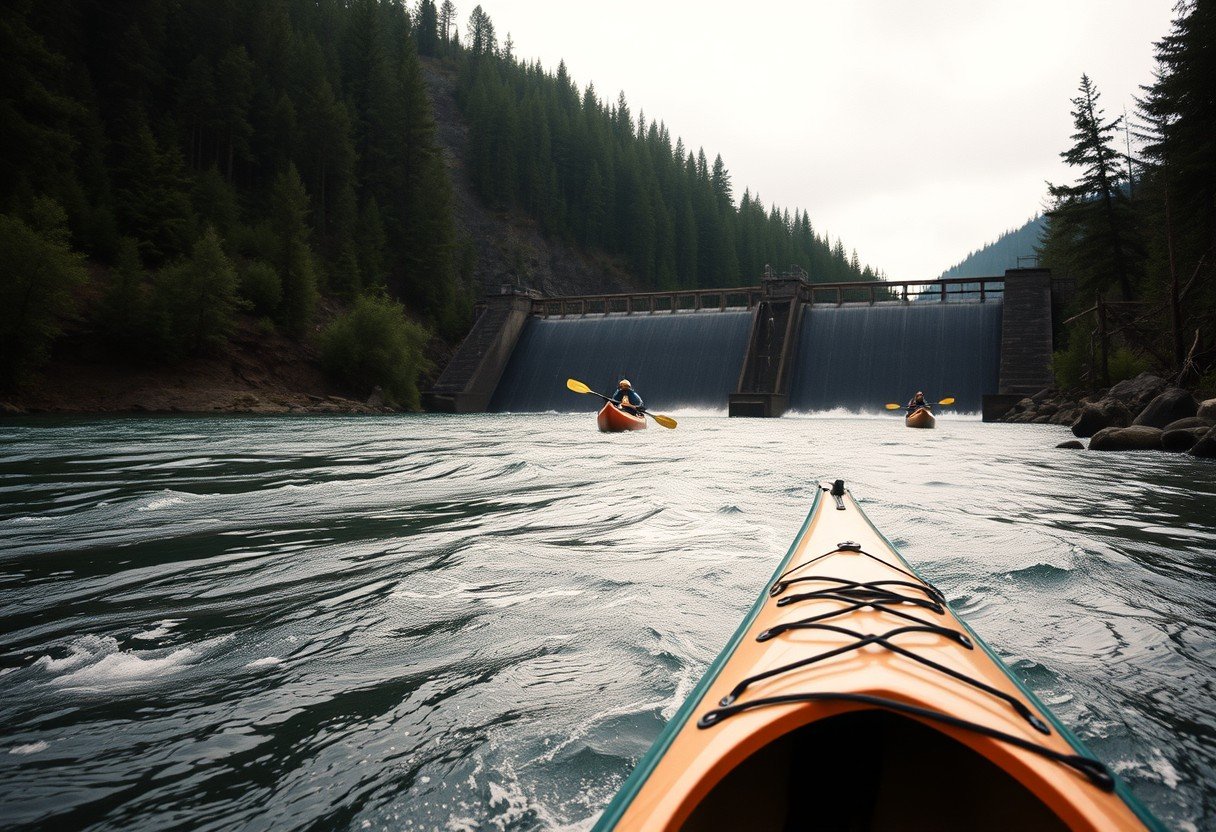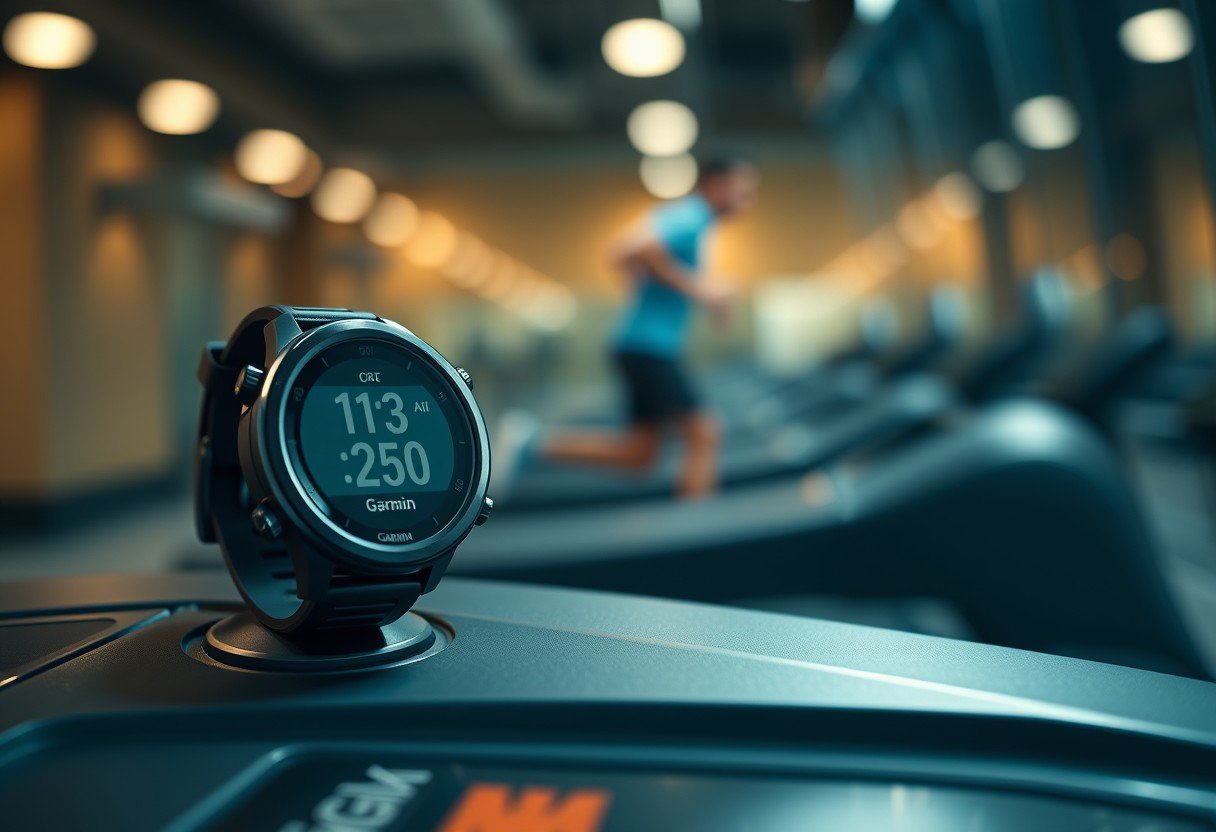Canoeing or kayaking on a river offers a wonderful escape, but hidden dangers like low-head dams can turn a fun day into a tragedy. These structures, often appearing harmless, create powerful underwater currents that can trap even the strongest swimmers. Understanding how to identify, approach, and safely navigate around these hazards is a critical skill for any paddler, ensuring your adventures on the water remain safe and enjoyable.
Understanding the Hidden Dangers of a Low-head Dam
A low-head dam is a man-made structure built across a river or stream, typically standing less than 10 feet tall. While they may look like small, harmless waterfalls, they are incredibly dangerous due to the hydraulic force they create.
As water flows over the top of the dam, it creates a powerful, recirculating current at the base. This effect, often called a “hydraulic roller” or “keeper,” can pull a person, canoe, or kayak underwater, holding it against the face of the dam. This is why low-head dams are frequently referred to as “drowning machines.”
Escaping this recirculating current is nearly impossible, even for an expert swimmer wearing a life jacket. The force of the water is relentless, and the aeration of the water makes it less buoyant, making it harder to stay afloat.
How to Spot a Low-head Dam from Your Kayak
Recognizing a low-head dam from a distance is the first and most important step to avoiding its danger. Since they are low profile, they can easily blend into the natural river landscape, catching inexperienced paddlers by surprise. You must use both your eyes and ears to stay vigilant.
Look for a perfectly straight, uniform line running across the entire width of the river. This is often the most obvious giveaway. The water upstream of this line may appear deceptively calm and smooth, like a pool, while the water just downstream will be turbulent, frothy, and chaotic.
Listen for a consistent, even roaring sound. Unlike the varied sounds of a natural rapid, a dam produces a steady, monotonous noise from the water falling over its uniform edge. If you see or hear these signs, you must take immediate action.
Key visual indicators include:
- A straight, man-made line across the river surface.
- Calm, pool-like water directly upstream of the line.
- Turbulent, boiling whitewater directly downstream.
- Debris that appears to be trapped and circulating at the base of the drop.
Essential Safety Gear You Must Have
Having the right safety equipment is not just a suggestion; it’s a necessity for river paddling, especially on waterways with potential hazards. Your gear is your lifeline in an emergency situation.
The single most important piece of safety gear is a properly fitted, U.S. Coast Guard-approved personal flotation device (PFD) or life jacket. You must wear it at all times. In the event of a capsize, a PFD will keep you afloat, giving you precious time to assess the situation and work toward safety.
Beyond a PFD, every paddler should carry a whistle or other sound-producing device to signal for help. A throw bag, which is a rope stuffed into a bag, is also a crucial piece of rescue equipment. It allows you to help a swimmer from the shore without entering the dangerous water yourself. Finally, keep your cell phone in a waterproof case for emergency communication.
The Safest Way to Approach and Assess the Dam
The word “approach” can be misleading because your primary goal should be to stay as far away from a low-head dam as possible. As soon as you identify a potential dam ahead, your immediate priority is to get to the riverbank well upstream.
Once you are safely on shore, you can assess the situation. Look for any posted warning signs that provide information or guidance. From your vantage point, observe the water’s flow and identify the specific dangers. Plan your next steps with your paddling partners, ensuring everyone understands the plan before proceeding.
Clear and calm communication is vital. Verbally confirm the plan with everyone in your group. Agree on a safe path to carry your boats and a safe spot to re-enter the river far downstream from the dam’s turbulent water.
| Safe Actions | Unsafe Actions |
|---|---|
| Paddle to the nearest shore immediately upon spotting the dam. | Trying to get a closer look from your boat. |
| Scout a portage route from the safety of the riverbank. | Paddling over the dam, no matter how small it looks. |
| Communicate the plan clearly with all paddling partners. | Assuming you can paddle fast enough to avoid the current. |
Navigating Around the Dam The Portage Method
There is only one safe way to get past a low-head dam in a canoe or kayak: get out of the water and carry your boat around it. This process is called portaging. Never, under any circumstances, attempt to paddle over or near a low-head dam.
Portaging requires you to find a safe place to exit the river, carry your equipment along the riverbank, and find a safe place to re-enter the water well downstream of the dam and its dangerous currents. While it may seem like an inconvenience, it is the only way to guarantee your safety.
Follow these steps for a safe portage:
- Exit Early: As soon as you identify the dam, paddle to the riverbank. Make sure you are a safe distance upstream, where the current is not yet affected by the dam.
- Scout the Path: Before moving your gear, walk the path you intend to take. Look for obstacles like steep banks, slippery rocks, or poison ivy. Find a clear and safe re-entry point far downstream.
- Secure and Carry: Secure all loose gear inside your boat. It is often easiest to carry the boat with a partner. Take your time to avoid slips, trips, and falls.
- Re-enter Safely: Launch your boat only when you are well clear of any downstream turbulence from the dam. Ensure everyone in your group is ready before getting back on the water.
What to Do in an Emergency Situation
Even with careful planning, emergencies can happen. If you find yourself accidentally in the water upstream of a low-head dam, swim aggressively toward the nearest shore and away from the dam. Do not try to go over it. Grab onto your boat if it can help you get to the bank faster.
If you see someone else trapped in the hydraulic roller at the base of a dam, your instincts might tell you to jump in and help, but you must fight that urge. Do not enter the water to attempt a rescue, as you will likely become a victim as well.
Instead, act from the shore. Call 911 immediately and provide your location. If you have a throw bag, use it to try and reach the person from a stable position on land. Brace yourself and instruct the person to grab the rope so you can pull them out of the current.
Frequently Asked Questions about Low-Head Dams
Why are low-head dams called ‘drowning machines’?
They are called drowning machines because of the powerful, inescapable recirculating current they create at their base. This hydraulic roller pulls objects and people underwater, making self-rescue nearly impossible.
Can I ever paddle over a low-head dam if the water is high?
No. You should never attempt to paddle over a low-head dam, regardless of the water level. The hydraulic forces are always present and are dangerously unpredictable, making any attempt extremely hazardous.
What is the first thing I should do when I see a low-head dam?
The very first thing you should do is immediately start paddling to the nearest riverbank. Your priority is to get out of the water well upstream and a safe distance away from the dam’s influence.
How far upstream should I exit the river to portage?
There is no exact distance, but you should exit as soon as you positively identify the dam. A good rule of thumb is to be on shore at least a few hundred yards upstream to ensure you are not affected by any accelerating currents.
What is a throw bag and why is it important?
A throw bag is a rescue device containing a length of rope stuffed into a bag. It allows you to perform a shore-based rescue by throwing the bag to a person in the water, providing them with a line to be pulled to safety without the rescuer entering the water.









Leave a Comment